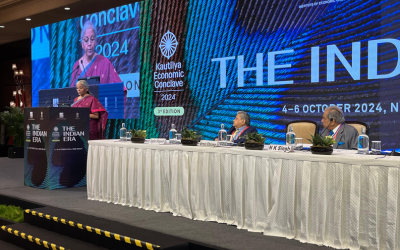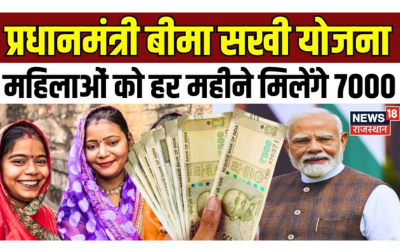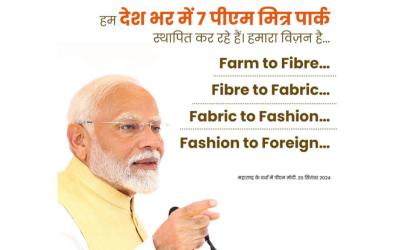Table of Contents
ToggleThe Impact of PMAY Gramin on Rural Housing in India
Pradhan Mantri Awas Yojna Gramin (PMAY Gramin), a government scheme was launched by Hon’ble Indian Prime Minister Shri Narendra Modi on 01 April 2016 to provide assistance to construct 2.95 crore pucca houses with basic amenities by March 2024. A total of 2,14,83,792 pucca houses were completed as of 31st January 2023 across the rural areas of the country under PMAY Gramin.
The scheme “PMAY Gramin” was initiated as part of the broader “Housing for All” initiative, within its framework PMAY Gramin.
Under the Scheme, Pucca house with all basic amenities including a Kitchen, bathroom, and toilet will be provided. It is the successor of the Indira Awaas Yojana; a similar welfare measure run by the Government in the year 1985, and is regarded as one of the most extensive social schemes.
Features of Pradhan Mantri Awas Yojna (PMAY Gramin)
The following features are the main highlights of this ambitious welfare plan.
(i) The government has committed to providing “Housing for All” by 2024. To fulfill the Government’s commitment and address rural housing gaps, Pradhan Mantri Awaas Yojana Gramin (PMAY-G) is being implemented w.e.f. 1st April, 2016.
(ii) In the first phase, 1.00 crore houses were taken up for construction in 3 years, i.e., 2016-17 to 2018-19. To complete the overall target of 2.95 crore houses under PMAY-G, the remaining houses are to be completed by March, 2024.
(iii) The minimum size of the house has been increased from 20 Sqr meters to 25 Sqr Meters with a hygienic cooking space.
(iv) The beneficiaries are entitled to 90/95 person days of unskilled labour from MGNREGS.
(v) There will also be extra financial assistance of Rs. 12,000 per beneficiary for constructing permanent toilets for each house. This additional assistance is covered under the Swachh Bharat Mission-Gramin or SBM-G.
(vi) This step will enhance the living conditions of rural people.
(vii) The scheme is transparently designed and interlinked with Saving Bank Account and Aadhar Data. All payments will be transferred directly to the bank accounts of beneficiaries, and Aadhaar data will also be verified to ensure that payments are received only by those who need them.
(viii) The cost of providing houses will be shared between the central and state governments.
How to Apply for Pradhan Mantri Awas Yojna (PMAY Gramin)
The following steps are to be adhered to apply to the PMAY-Gramin scheme, it will apply only when a beneficiary is already qualified but not added to the database.
- Log in to PMAY G.
- Fill in all the relevant details, which consists of gender, Aadhaar number, mobile number, and other details.
- The consent letter mentioned earlier for using the Aadhaar data has to be uploaded in its entirety.
- The ‘search’ button will now appear and find your details and update it.
- Next, click on ‘Register’.
- Automatically, the beneficiary’s details will appear. Re-check all the details submitted are correct and update it.
- The remaining fields including Aadhaar details, details of nomination, bank account, etc. have to be filled.
- After completion of this data entry process, if a beneficiary wishes to avail of a loan under this scheme, he or she can click on ‘Yes’ and fill in an amount required as a loan.
- Finally, SBM and MGNREGS details have to be uploaded.
- With the completion of these steps, the assigned authority will process the request to add a beneficiary.
Eligibility for PMAY-G
The following categories of people are eligible to obtain the benefits of this scheme.
1. Households without shelter
2. Destitute / living on alms
3. Manual scavengers
4. Primitive Tribal Groups
5. Legally released bonded labourer
6. To all eligible houseless households and households living in kutcha and dilapidated houses in rural areas
Document required for PMAY-G
The following documents are required to attain the benefits of PMAY Gramin
(i) Applicant Aadhar Card No and self-attested copy of it, if the applicant is illiterate, a consent letter along with the beneficiary’s thumbprint.
(ii) A job beneficiary card duly registered with MGNREGA.
(iii) Bank account details – both originals and duplicates.
(iv) The applicant’s Swachh Bharat Mission (SBM) number.
Latest Update on PMAY-G
The PMAY-G guidelines provide that allotment of the house shall be made jointly in the name of the husband and wife, except in the case of a widow/unmarried/ separated person. The State may also choose to allot, the house solely in the name of the woman.
Further, to ensure the empowerment of women, an advisory has been issued stating that all the houses under PMAY-G should include names of women members of the household in sanction details/ownership details (either solely or in joint ownership) and that the female member(s) may be added as the secondary owner in the sanction letters where the initial sanction has already been given in the name of the male member.
Against the overall completion of 2.41 crore houses as on 28.07.2023, 64,31,304 completed houses are solely in the name of women and 1,02,52,451 jointly in the name of wife and husband i.e., 1,66,83,755 (69.08%) of the total completed houses under PMAY-G.
The Pradhan Mantri Awas Yojna Gramin (PMAY-G) is a transformative initiative aimed at providing affordable housing to rural households across India. Launched with the goal of ensuring “Housing for All” by 2022, PMAY-G focuses on empowering rural communities by addressing their housing needs through financial assistance and support.
Key features of PMAY-G include:
Financial Assistance: Providing financial assistance for the construction of pucca houses to eligible beneficiaries, including marginalized communities and those living below the poverty line.
Inclusive Development: Promoting inclusive development by prioritizing vulnerable groups such as women, SCs, STs, and differently abled individuals for housing support.
Infrastructure Development: Supporting infrastructure development in rural areas through the construction of amenities such as roads, water supply, sanitation, and electricity connections.
Empowerment: Empowering rural households by improving their quality of life and contributing to sustainable rural development.
PMAY-G aims to enhance living standards, promote socio-economic development, and foster inclusive growth in rural India. By providing access to safe and affordable housing, the initiative plays a crucial role in realizing the government’s vision of a developed and prosperous rural India.
Latest Updates on Pradhan Mantri Awas Yojana Gramin (PMAY-G)
The Pradhan Mantri Awas Yojana Gramin (PMAY-G) is a flagship scheme by the Government of India aimed at providing affordable housing to the rural poor. Launched in 2016, the scheme has made significant strides in improving the living conditions of millions of rural households. Here are the latest updates and key features of PMAY-G.
Recent Developments
Extension of the Scheme:
- The Union Cabinet has approved the continuation of PMAY-G until March 2024. This extension aims to cover the remaining beneficiaries and ensure that the target of constructing 2.95 crore pucca houses is achieved.
Increased Financial Assistance:
- The financial assistance for house construction has been increased to ₹1.20 lakh in plain areas and ₹1.30 lakh in hilly and difficult areas. This adjustment is intended to accommodate rising construction costs and ensure better quality housing.
New Targets:
- The government has set a new target to construct an additional 2 crore houses by 2028-29. This ambitious goal underscores the commitment to providing housing for all in rural areas.Technological Integration:
- The scheme has integrated advanced technologies for monitoring and implementation. The use of geo-tagging and mobile applications like ‘AwaasApp’ ensures transparency and efficiency in the construction process.
Key Features of PMAY-G
Beneficiary Selection:
Financial Inclusion:
Convergence with Other Schemes:
Focus on Women and Marginalized Groups:
Benefits of PMAY-G
Improved Living Conditions:
Economic Empowerment:
Social Security:
The Pradhan Mantri Awas Yojana Gramin is a transformative initiative that aims to provide “Housing for All” by 2024. With its recent extensions and increased financial assistance, the scheme is set to achieve its ambitious targets, ensuring that every rural household has access to a safe and secure home. The integration of technology and convergence with other welfare schemes further enhances its impact, making PMAY-G a cornerstone of rural development in India.



